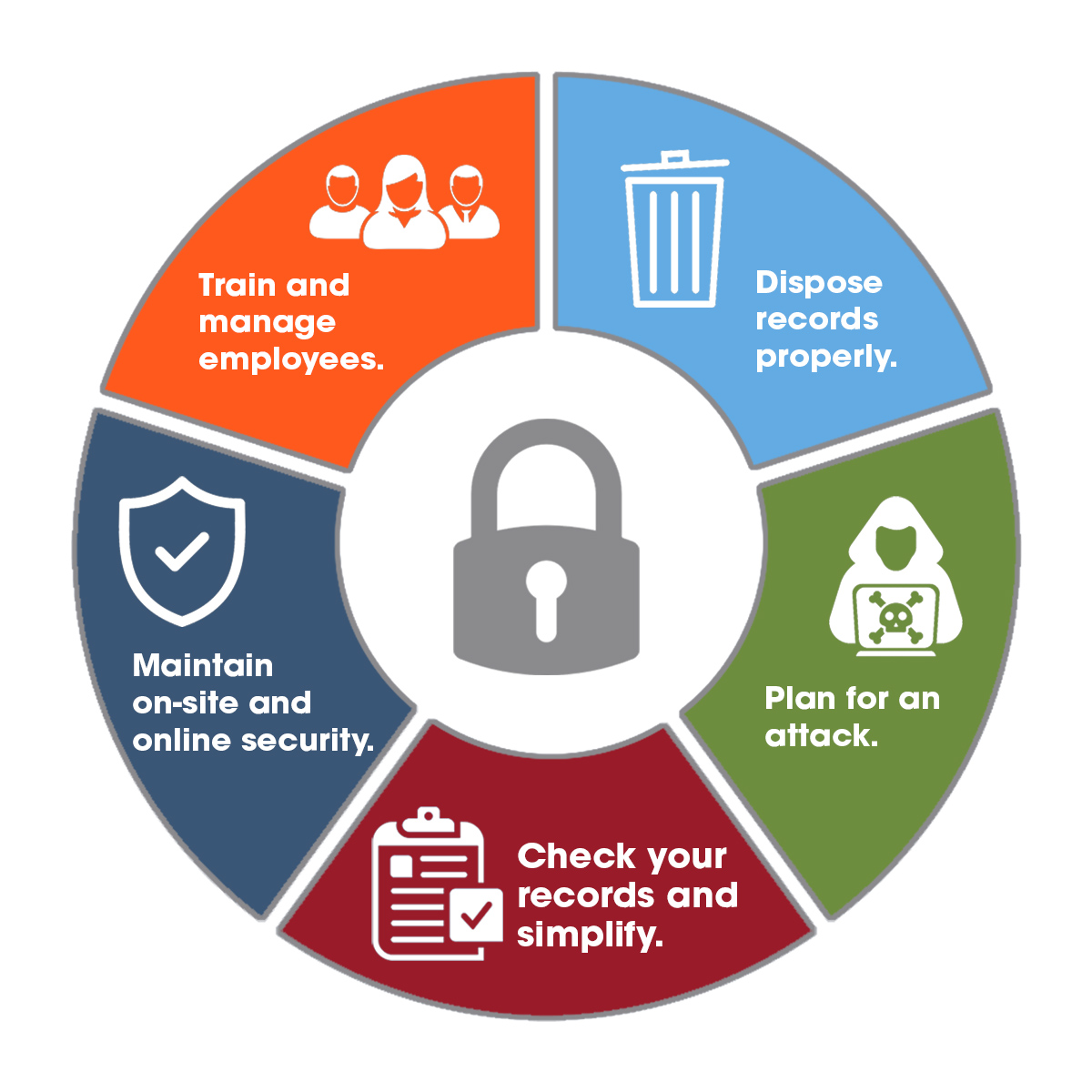The Imperative of Robust Data Protection in the Cloud
In today’s digital landscape, organizations increasingly rely on cloud computing to store and manage sensitive data. As a result, the need for robust cloud security solutions has become paramount. Implementing effective cloud security measures not only protects sensitive information from potential breaches but also ensures regulatory compliance and maintains customer trust.
Cloud security solutions for sensitive data encompass a range of tools and strategies designed to safeguard valuable information in cloud environments. These solutions address various aspects of cloud security, including data encryption, access management, and security monitoring. By integrating these components seamlessly, organizations can build a comprehensive security framework that minimizes the risk of data breaches and maximizes the benefits of cloud computing.
The consequences of data breaches can be severe, leading to financial losses, reputational damage, and legal repercussions. In fact, according to a recent study, the average cost of a data breach is approximately $3.92 million. Utilizing cloud-based security solutions can help mitigate these risks by providing advanced protection mechanisms, real-time threat detection, and automated response capabilities. Moreover, cloud security solutions enable organizations to scale their security efforts alongside their cloud infrastructure, ensuring consistent protection as their data needs evolve.

Categorizing Sensitive Data: A Crucial Step
In the context of cloud security solutions for sensitive data, categorizing data is a critical step in ensuring appropriate protection. By defining and organizing sensitive data, organizations can establish a clear framework for managing access, enforcing encryption, and monitoring activity. This process involves identifying and classifying data based on its level of sensitivity and potential impact in the event of a breach.
To begin categorizing sensitive data, organizations should first define their criteria for sensitivity. This may include factors such as regulatory requirements, intellectual property protection, and privacy concerns. For example, financial information, healthcare records, and proprietary research data are often classified as highly sensitive due to strict regulatory guidelines and potential financial or reputational damage in the event of a breach.
Once sensitive data has been identified, organizations can create a classification system. A common approach involves three to four levels of sensitivity, such as public, internal, confidential, and restricted. Each level corresponds to specific access controls, encryption requirements, and monitoring protocols. For instance, restricted data may be accessible only to select individuals, encrypted at rest and in transit, and subject to continuous monitoring and logging.
When defining a classification system, it is essential to consider the unique needs and constraints of the organization. Factors such as industry regulations, business objectives, and risk tolerance should all inform the classification process. Additionally, organizations should regularly review and update their classification system to ensure it remains relevant and effective as their data needs evolve.
By categorizing sensitive data and implementing a robust cloud security framework, organizations can significantly reduce the risk of data breaches and protect their valuable information. Integrating encryption, access management, data loss prevention, and security monitoring tools enables organizations to maintain a strong security posture and adapt to emerging threats in the ever-evolving cloud landscape.

Key Components of Robust Cloud Security Solutions
Implementing effective cloud security solutions for sensitive data requires a multi-faceted approach, combining various components to ensure comprehensive protection. These essential components include encryption, access management, data loss prevention, and security monitoring. Integrating these components seamlessly is crucial for maintaining a strong security posture and adapting to emerging threats in the cloud landscape.
Encryption
Encryption is a fundamental aspect of cloud security, converting sensitive data into ciphertext, which can only be deciphered using a specific key. Encrypting data at rest and in transit helps protect sensitive information from unauthorized access, mitigating the risk of data breaches. Organizations should consider implementing encryption using industry-standard algorithms, such as Advanced Encryption Standard (AES) and Rivest-Shamir-Adleman (RSA).
Access Management
Access management involves controlling who can access sensitive data and under what circumstances. Implementing role-based access control (RBAC) and least privilege access principles can help organizations limit the risk of unauthorized access. RBAC assigns permissions based on job functions, while least privilege access ensures users have the minimum permissions necessary to perform their tasks. Additionally, multi-factor authentication (MFA) adds an extra layer of security by requiring users to provide multiple forms of identification before accessing sensitive data.
Data Loss Prevention
Data loss prevention (DLP) tools help organizations identify, monitor, and protect sensitive data throughout the cloud environment. DLP systems can detect potential data exfiltration attempts, prevent accidental data leaks, and enforce data usage policies. By integrating DLP with other cloud security components, organizations can maintain a strong security posture and minimize the risk of data breaches.
Security Monitoring
Security monitoring involves continuously tracking and analyzing cloud environment activities to detect potential security threats. Security information and event management (SIEM) systems, intrusion detection systems (IDS), and intrusion prevention systems (IPS) are common security monitoring tools. These tools can help organizations identify and respond to security incidents in real-time, ensuring the ongoing protection of sensitive data.
By combining encryption, access management, data loss prevention, and security monitoring, organizations can create robust cloud security solutions for sensitive data. Integrating these components seamlessly enables organizations to maintain a strong security posture, adapt to emerging threats, and protect their valuable information in the cloud.

Reviewing Top-Tier Cloud Security Solutions for Confidential Data Protection
Organizations seeking to protect sensitive data in the cloud can choose from a variety of highly-regarded cloud security solutions. This section examines AWS Key Management Service (KMS), Microsoft Azure Security Center, and Google Cloud Security Command Center, comparing their features and benefits to help you make an informed decision.
AWS Key Management Service (KMS)
AWS Key Management Service (KMS) is a cloud-based key management solution that enables organizations to manage encryption keys for data protection. KMS offers centralized key management, seamless integration with AWS services, and fine-grained access control. Additionally, KMS supports compliance requirements, such as HIPAA, PCI DSS, and GDPR, making it an ideal choice for organizations operating in regulated industries.
Microsoft Azure Security Center
Microsoft Azure Security Center is a unified security management and threat protection solution for Azure workloads. It offers features like adaptive threat protection, advanced threat detection, and just-in-time VM access. Azure Security Center also supports multi-cloud environments, enabling organizations to secure workloads across Azure, AWS, and Google Cloud Platform. Its integration with Microsoft’s extensive suite of security tools adds value for organizations already using Microsoft’s ecosystem.
Google Cloud Security Command Center
Google Cloud Security Command Center is a comprehensive security management and data protection solution for Google Cloud Platform (GCP). It provides a unified view of security across GCP, enabling organizations to identify and respond to threats more effectively. Key features include asset discovery, vulnerability scanning, and threat detection. Google Cloud Security Command Center also integrates with third-party security tools, providing a flexible and adaptable solution for organizations seeking to protect sensitive data in the cloud.
When selecting a cloud security solution for confidential data protection, consider factors such as ease of integration, compatibility with existing infrastructure, and support for regulatory compliance. By carefully evaluating these top-tier solutions, organizations can choose the best fit for their unique needs and protect sensitive data effectively in the cloud.
Implementing Selected Cloud Security Solutions: Best Practices
Implementing cloud security solutions for sensitive data requires careful planning and execution. By following best practices, organizations can ensure maximum protection for their sensitive data and minimize the risk of data breaches. This section discusses key considerations for successful deployment and integration of chosen cloud security solutions.
Understanding Your Organization’s Unique Needs
Before implementing a cloud security solution, it’s essential to understand your organization’s unique needs and requirements. Assess your current infrastructure, identify potential vulnerabilities, and determine the level of security required for different types of sensitive data. This information will help you choose the most appropriate cloud security solution and tailor its configuration to your organization’s specific requirements.
Planning for Seamless Integration
Seamless integration is crucial for the successful deployment of cloud security solutions. Ensure that the chosen solution integrates well with your existing infrastructure and applications. Additionally, consider how the solution will impact your organization’s workflows and user experience. A well-planned integration strategy can help minimize disruptions and ensure a smooth transition to the new security solution.
Involving Stakeholders and Providing Training
Engage relevant stakeholders, such as IT staff, management, and end-users, in the implementation process. Clearly communicate the benefits of the new cloud security solution and provide adequate training to ensure a thorough understanding of its features and functionality. Involving stakeholders in the implementation process can help build buy-in, improve user adoption, and reduce potential resistance to change.
Monitoring and Evaluating Performance
After implementing a cloud security solution, monitor its performance and evaluate its effectiveness regularly. Track key performance indicators (KPIs) and metrics to ensure that the solution is meeting your organization’s security objectives. Continuous monitoring can help identify potential issues early, enabling you to address them promptly and maintain optimal security posture.
Adapting to Emerging Threats and Changes
The cybersecurity landscape is constantly evolving, with new threats and vulnerabilities emerging regularly. Stay informed about emerging trends and adapt your cloud security solution accordingly. Regularly update the solution, conduct security audits, and provide ongoing staff training to ensure that your organization remains protected against evolving threats.
By following these best practices, organizations can successfully deploy and integrate cloud security solutions for sensitive data, ensuring maximum protection and long-term success.

Optimizing and Maintaining Cloud Security Solutions: Recommendations
Implementing robust cloud security solutions for sensitive data is just the beginning. To ensure long-term protection, organizations must invest time and resources in ongoing maintenance, updates, and staff training. This section discusses best practices for optimizing and maintaining cloud security solutions, emphasizing continuous improvement and adaptation to emerging threats.
Regularly Updating Cloud Security Solutions
Cloud security solution providers regularly release updates and patches to address new vulnerabilities and threats. Organizations should install these updates promptly to ensure their security solutions remain effective. Regularly reviewing the update history and scheduling automatic updates can help maintain optimal security posture and minimize the risk of data breaches.
Conducting Security Audits
Security audits involve a comprehensive evaluation of an organization’s security infrastructure, policies, and procedures. Regularly conducting security audits can help identify potential vulnerabilities, ensure compliance with industry standards, and provide insights for improving overall security posture. Engage experienced cybersecurity professionals to perform these audits and provide recommendations for improvement.
Providing Ongoing Staff Training
Human error is a significant factor in many data breaches. Providing ongoing staff training on cybersecurity best practices, including recognizing and reporting potential threats, can help minimize the risk of data breaches. Regularly update training materials to reflect emerging threats and changes in security policies and procedures.
Monitoring and Evaluating Security Performance
Monitoring and evaluating security performance involves tracking key performance indicators (KPIs) and metrics related to cloud security solutions. Regularly reviewing these metrics can help identify potential issues, ensure that security objectives are being met, and provide insights for improving overall security posture. Common KPIs include the number of security incidents, mean time to detect and respond to incidents, and user adoption rates.
Adapting to Emerging Threats
The cybersecurity landscape is constantly evolving, with new threats and vulnerabilities emerging regularly. Stay informed about emerging trends and adapt your cloud security solutions accordingly. Regularly review security policies and procedures, update training materials, and consider investing in new security solutions to address evolving threats.
Optimizing and maintaining cloud security solutions is an ongoing process that requires a commitment to continuous improvement and adaptation. By following these recommendations, organizations can ensure their cloud security solutions for sensitive data remain effective and provide long-term protection against evolving threats.

Assessing and Enhancing Your Cloud Security Posture: Methods and Tools
Organizations must regularly evaluate and improve their cloud security posture to ensure long-term protection for sensitive data. This section discusses methods and tools for assessing and enhancing cloud security posture, addressing potential vulnerabilities and offering strategies for proactive threat mitigation.
Assessing Cloud Security Posture
Assessing cloud security posture involves evaluating the effectiveness of existing security measures and identifying potential vulnerabilities. Organizations can use various tools and techniques to perform these assessments, including:
- Security audits: Comprehensive evaluations of an organization’s security infrastructure, policies, and procedures.
- Vulnerability scanning: Automated tools that scan cloud infrastructure for known vulnerabilities and misconfigurations.
- Penetration testing: Simulated cyberattacks that test an organization’s defenses and identify potential weaknesses.
Enhancing Cloud Security Posture
Based on the results of the assessment, organizations can take various steps to enhance their cloud security posture, including:
- Implementing security best practices: Adopting industry-standard security best practices, such as multi-factor authentication, least privilege access, and regular patching.
- Addressing vulnerabilities: Remediating identified vulnerabilities, such as misconfigured cloud resources or outdated software.
- Improving incident response: Developing and testing incident response plans to ensure a swift and effective response to security incidents.
- Monitoring and alerting: Implementing security monitoring and alerting tools to detect and respond to potential threats in real-time.
Proactive Threat Mitigation
Proactive threat mitigation involves taking steps to prevent security incidents before they occur. Organizations can employ various strategies to mitigate potential threats, including:
- Threat intelligence: Monitoring threat intelligence feeds to stay informed about emerging threats and vulnerabilities.
- Security automation: Implementing security automation tools to detect and respond to threats more quickly and efficiently.
- Employee training: Providing regular training to employees on cybersecurity best practices and how to recognize and respond to potential threats.
Assessing and enhancing cloud security posture is an ongoing process that requires a commitment to continuous improvement and adaptation. By following these methods and tools, organizations can ensure their cloud security solutions for sensitive data remain effective and provide long-term protection against evolving threats.

Navigating the Future of Cloud Security Solutions for Confidential Data
As organizations increasingly rely on cloud computing to store and process sensitive data, the need for robust cloud security solutions becomes paramount. Emerging trends in cloud security solutions for confidential data can help organizations stay ahead of the curve in protecting their valuable information. This section explores these trends and offers insights on navigating the future of cloud security solutions.
Advancements in Artificial Intelligence (AI) and Machine Learning (ML)
AI and ML technologies are revolutionizing cloud security solutions for sensitive data. These technologies enable security tools to analyze vast amounts of data, detect anomalies, and predict potential threats more accurately. By leveraging AI and ML, organizations can automate threat detection and response, reducing the workload on security teams and improving overall security posture.
Zero Trust Security Model
The zero trust security model is an emerging trend in cloud security that assumes all network traffic is untrusted. This model requires continuous verification and authentication of users, devices, and applications, regardless of their location within the network. By implementing a zero trust security model, organizations can minimize the risk of data breaches and unauthorized access to sensitive data.
Integration of Cloud Security Solutions
As cloud environments become increasingly complex, the need for integrated cloud security solutions becomes more critical. Integrated cloud security solutions enable organizations to manage security policies, monitor threats, and respond to incidents from a centralized platform. By integrating cloud security solutions, organizations can improve visibility, streamline security management, and reduce the risk of security gaps.
Adoption of DevSecOps Practices
DevSecOps is an emerging trend that integrates security into the DevOps process. By adopting DevSecOps practices, organizations can build security into their applications and infrastructure from the ground up, reducing the risk of vulnerabilities and ensuring compliance with security regulations. By incorporating security into the development process, organizations can improve agility, reduce time-to-market, and enhance overall security posture.
Quantum-Resistant Cryptography
Quantum computing poses a significant threat to current encryption algorithms. Quantum-resistant cryptography is an emerging trend that aims to address this threat by developing encryption algorithms that are resistant to quantum computing. By adopting quantum-resistant cryptography, organizations can ensure the long-term protection of their sensitive data in a post-quantum world.
Navigating the future of cloud security solutions for confidential data requires organizations to stay informed about emerging trends and adopt innovative technologies and practices. By leveraging AI and ML, implementing a zero trust security model, integrating cloud security solutions, adopting DevSecOps practices, and embracing quantum-resistant cryptography, organizations can enhance their cloud security posture and protect their sensitive data in an ever-evolving threat landscape.

